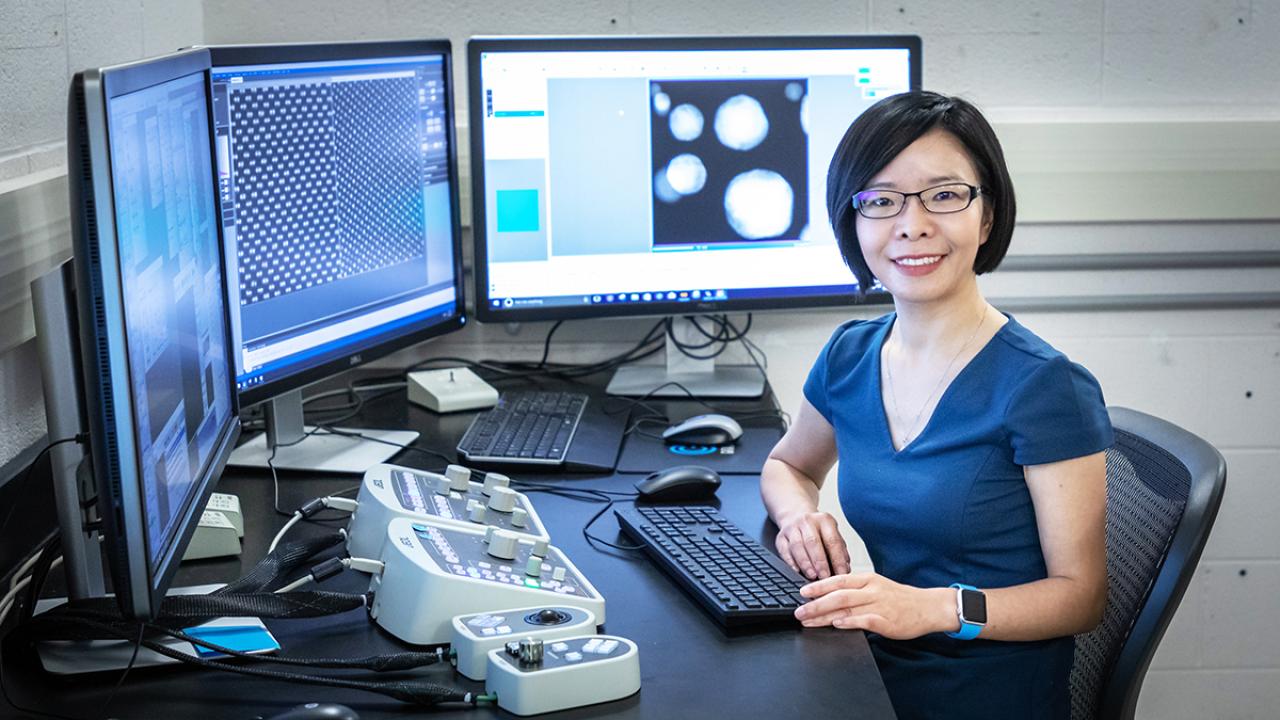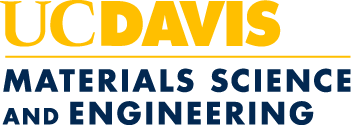
UC Davis Alumna Pays it Forward as Pioneer in Electron Microscopy
Miaofang Chi, Ph.D. '08 is a distinguished scientist at Oak Ridge National Laboratory and electron microscopy pioneer. In many ways, her experiences, training and mentorship at UC Davis set her on this path and continue to help her as she develops new methods to apply materials science concepts to new fields ranging from energy to planetary science.
An electron microscope's high spatial resolution allows Chi and her colleagues to study materials on an atomic level to understand how ions move across interfaces — where two different materials meet. With her insights, Chi can help scientists to design materials and interfaces with facile ion transport, prevent dendrite growth, and improve efficiency, cyclability and performance of new solid-state batteries.
She has also contributed to studies of quantum materials at cryogenic temperatures, using her background to develop new techniques and push the boundaries of electron microscopy.
"At this point, we are at the leading edge of breakthroughs in electron microscopy, which enables us to directly see and manipulate individual atoms directly. we can study nearly all materials using electron microscopy," she said. "We look at atoms and electrons which are the most fundamental building blocks that make up everything. For me, studying materials in a microscope is the same regardless of whether it pertains to energy materials, quantum materials, or those found in nature."
Learning About the Labs
Chi had been fascinated with electron microscopes since high school but got her first experience with state-of-the-art equipment as a second-year Ph.D. student at UC Davis. She worked at Lawrence Berkeley National Lab, or LBL, where she had the opportunity to work at the National Center of Electron Microscopy and collaborate with the lab's staff scientists.
Her experience at LBL provided her valuable training in cutting-edge microscopy techniques and instilled in her the importance of collaboration. This led her to pursue a graduate research scholarship at Lawrence Livermore National Laboratory, or LLNL, where she focused on analyzing cometary dust particles collected by NASA's Stardust mission. Though the project was firmly in planetary science, her teachers and advisors at UC Davis were nothing but supportive, and she was able to help the lab study these materials for the first time.
"With that encouragement, I was able to pursue a fellowship program that was very different," she said. "It was very interesting for me mainly because we were utilizing microscopy techniques which, at that time, were just developed for materials science — and applying those techniques to planetary science."
The LLNL fellowship set the course for her career and after earning her Ph.D., she joined Oak Ridge National Laboratory, where she had the opportunity to work with and learn from university researchers around the world.
"It was really nice to me to have that opportunity to work with so many great scientists and professors, and that really helped me develop my own career because I got the chance to learn a lot of different material systems and different aspects of research from chemistry, physics and all kinds of different things from others," she said.
As she's become a distinguished staff scientist, Chi finds herself coming back to the fundamental training and knowledge she received from UC Davis, particularly her thermodynamics and mechanical property measurements classes. She also keeps in touch with her advisor, Professor of Materials Science Nigel Browning (now at the University of Liverpool), and continues the relationship they started when she was a student.
"He is my mentor, and he has always been my mentor," she said. "I still go back to him when I need suggestions or guidance on my career."
Paying it Forward
Chi has received the Oak Ridge National Laboratory's Director Award for Outstanding Accomplishment in Science and Technology in 2015 and 2021, was awarded the Burton Medal from the Microscopy Society of America and the Kurt Heinrich Award from the Microanalysis Society, and has appeared on Clarivate's list of Highly Cited Researchers three times.
What she's proudest of, however, is paying it forward. She makes a point to give as many university scholars and postdoctoral scholars opportunities as possible and even co-supervises a few students so others can follow in her footsteps.
"The collaboration between universities and national labs is extremely beneficial for both parties," she said. "The connection between UC Davis and the national laboratories opened up opportunities for me to access the top-notch facilities and expertise. National lab scholar programs not only train the next generation of scientists, but also help in attracting new scientific and engineering talent to the labs. This not only benefits the labs but also contributes to the growth and progress of the broader scientific community."
